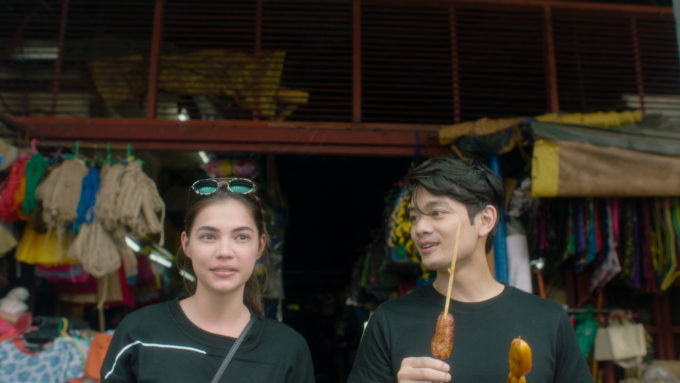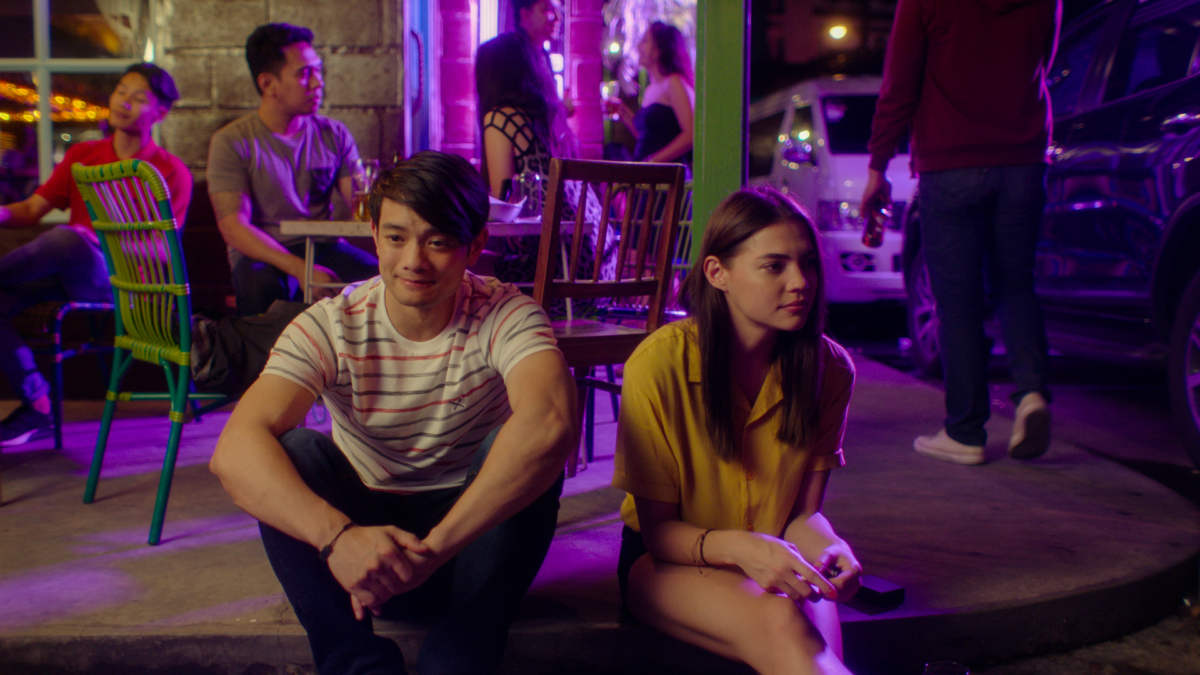Written By: Melissa Slaughter
“I wrapped on my birthday, August 26th, ‘cause I said I wanted to finish a film before I turned 30. And JoAnn was like, ‘we’ve got to get it done …’”
Andrea A. Walter, the writer, director, and director of photography for the independent film “Empty by Design” told me this while we sat in a cafe at New York City’s Asia Society. She had just finished a talkback for the screening of her film as a part of the 42nd Asian American International Film Festival. Joining us at that table were some of the film’s actors and producers, Dante Basco and Desmond Chaim.
The story of “Empty by Design” is in many ways a simple one. Samantha (Rhian Ramos) is a university student who comes back home after her parents’ sudden passing. Instead of going back abroad to finish her education, her sister insists that Sam stays in the Philippines. Sam’s left uncertain about her next steps. She’s got loose ends back at school, but she’s got almost no emotional connections to her hometown friends.
On the other end of the story is Erik (Osric Chau), a stuntman who’s been far from the Philippines for over a decade. He returns as a crew member for a major, big-budget action film. Chris Pang plays the film’s star Jun Jie, and Dante Basco plays his version of a major Hollywood director. But Erik sits in his trailer waiting to be called to shoot. He has time to kill and no one to spend it with. This, mixed with the fact that he no longer speaks Tagalog, has him struggling with being back home and with what his place in life is.
This sense of otherness and exclusion has followed them since high school. Erik describes himself as a recluse and Samantha as a loner who smoked a lot. The two attended school together and their current state of mutual loneliness draws them together. Their relationship is strictly platonic, something important to director/writer Andrea A. Walter. At the talkback, Walter said, “I wanted to show that males and females can be friends, which is very rare in Filipino cinema.”

The title “Empty by Design” might have been inspired by multiple IKEA trips (something Walter told me in a previous interview). But it encompasses many different meanings. Humans are empty at birth, waiting to be filled with cultures and expectations that are outside of our control. The title also refer to innate insecurities — to the feeling that we’ll always be on the outside of society. Being part of the Asian diaspora means that we’re always straddling multiple identities, whether its being mixed race or third culture or something else. This means home is hard to define. That searching for a place to belong can leave one feeling isolated and broken, and in turn, empty.
There’s multiple, intersectional identities that set these characters apart from their peers. Samantha is mixed-race, bisexual and from a wealthy background. Walter wrote a lot of herself into the character: “Personally I felt very vulnerable doing it. I was very scared to show how I felt about being mixed race. I get it a lot where people say I’m not white enough or I’m not Filipino enough so to put myself on screen, I specifically cast a mixed race Filipina for her role.”
Walter isn’t the only one whose personal life influenced her characters. Erik’s circumstances are largely pulled from the experiences of Osric Chau (Chau also serves as a producer on the film). Erik is from a slightly different socioeconomic status than Sam, and he could be perceived as almost more American than Filipino. Personally, I identified more with Erik’s struggle of never feeling enough. His loss of Tagalog resonated with my own inability to speak my grandparents’ native Japanese. It’s just one of the many ways that Walter’s film highlights that otherness that sets people apart.
But the title “Empty by Design” also evokes the exact imagery presented in the eponymous film. Walter’s background as a cinematographer is used to its full potential. Shots linger on Samantha sitting alone in her giant home; the spacious complex that anyone would be happy to live in starts to feel isolating and stifling. Erik walks in the streets surrounded by people who look like him but with whom he can barely communicate.
The film has a very show-don’t-tell quality. The story is primarily told through the feelings evoked by shots of open grey skies and moments of silence. When dialogue is spoken, it serves a narrative purpose. Samantha and her sister don’t have casual sisterly chats. They talk about their parents’ recent death, or how to adjust back to their homeland after living abroad. When Erik talks with his film team, he’s usually as a tertiary part of the conversation. He’s left out of his own life; he doesn’t have his own agency. He’s not living his dream. He plays a part for an actor who’s playing a part. As he says, he’s not an artist. Rather he’s “a tool” for the artists. But he doesn’t have a vision for what he wants; his dreams are, in fact, empty.
But Walter’s and Chau’s dream of making this film was anything but. For a story all about feeling othered, lost, isolated and alone, it took a community to put the film together. Andrea wrote the script, and actor Osric Chau signed on to produce for the first time. They wanted to film in the Philippines, Andrea’s home country. Chau brought actor/producer Dante Basco early on as Basco already had connections in that country. From there they added actor Chris Pang, actor and former lawyer Desmond Chiam and actor/stunt coordinator Yoshi Sudarso. Basco then contacted JoAnn Cabalda Banaga in the Philippines to help with financing and hiring a local crew. The team banded together with everyone taking on various roles and helping out in every capacity. As Basco put it, “Filmmaking is the craziest thing because you basically [have] to do everything, or be one of the people that helps do everything.”
In every instance I’ve heard the team talk about the film, whether it was during a podcast recording, a talkback or in person around a cafe table, they all talk consistently about how much work the entire team put in. In the talkback for the AAIFF screening, Walters said that Chau was her main cheerleader through the writing process, pushing her when she needed to complete the work (which she finished in just a month). Chiam (actor/producer) told a story about how everyone pulled money out of their bank accounts to pay for locations, with Basco jumping in to tell me that everything in the Philippines is done in cash. Hearing them talk about the experience is to listen to a love fest.
“When you’re talking about your art feeding you like, that was amazing,” Chiam told me. “It was an incredible time. And it was cool to go work with people that I, you know, I love and I trust …”
“You kind of roll with someone’s tastes. It’s also a leap of faith,” added Basco. “I mean, if you haven’t worked with somebody before, you know, like we gonna get this done?”
But they did get it done. In just over one year, from writing to post-production, “Empty By Design” has premiered at the Los Angeles Asian Pacific Film Festival and is now successfully touring the independent film circuit. It’s an exciting first run for Walter and her team. In the film, the characters find each other, and in doing so are able to work out what their next steps are in their personal lives. The same could be said for this team. They found each other, worked together, and created a film that touches on the universal feeling of loneliness and the necessity of friendship. And it all started as simply as Andrea Walter turning to her friends and asking “do you guys just want to run through the trenches with me and just do a movie?”
To learn more, check out an interview I did with the filmmakers of “Empty By Design” on the podcast, “We’re Not All Ninjas.”
Director: Andrea A. Walter
Stars: Rhian Ramos, Osric Chau, Chris Pang, Dante Basco
Running Time: 1 hour 24 minutes
Genre: Narrative, Drama

